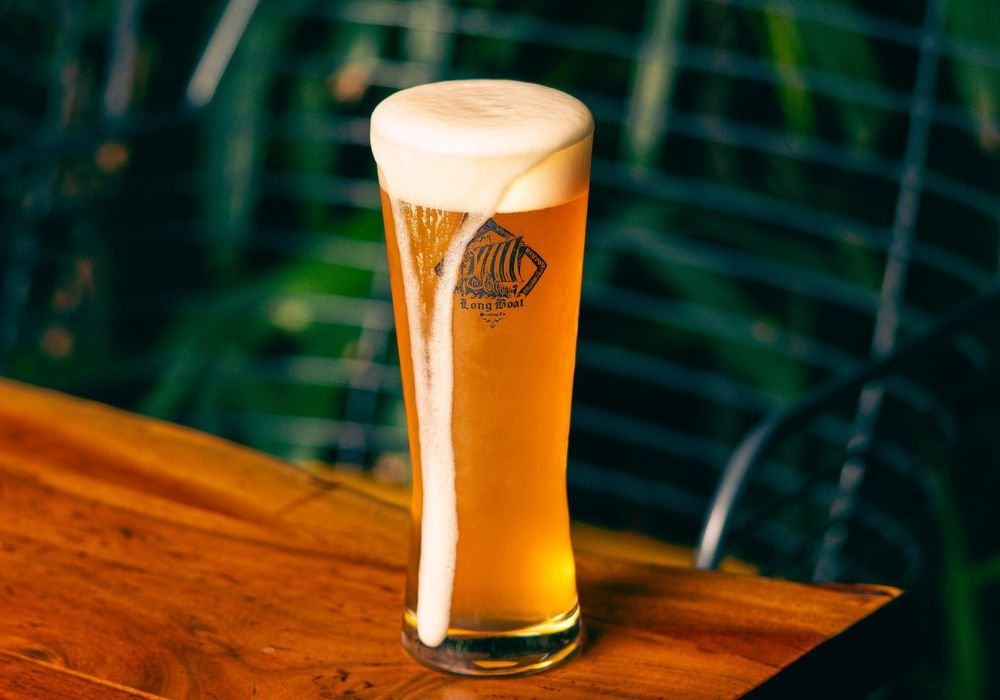Brewing Quality Control and Quality Management

Bijay Bahadur
Factory Manager, Yuksom Breweries Limited (Sikkim)
Introduction
With the presence of multinational breweries in India, the competition between Indian (local) and multinational breweries has become very intense. The issues related to production processes and beer storage and deals less with TQM issues are also being dealt through International technical cells or laboratories. Most successful breweries are those that manage to harmonize productivity with consistency of quality, while at the same time they have to maintain their market share by meeting the consumers’ demands. Hence, quality in the brewery is a matter of concern that has to do with the entire supply chain and all the stakeholders involved from production to consumption. All the breweries focus on production as well as to ensure product quality consistently and reduce production costs through increased productivity.
Thus, the aim of this article is to describe the basic concepts of brewing quality control and quality management in the brewery, through the methods and tools of implementing quality control measures and quality management in the brewery and certain best practices of the breweries that abide by total quality management.
Variability in Quality Control Resources
There is a wide range of variability in the resources dedicated to quality control in the brewing process due to diverse aspects of a brewery, including:
- Size and age
- Degree of process complexity
- Degree of automation
- Types of beer produced Workforce size and level of competency and skill
- Availability of in-house technical resources
- Laboratory analyses
- Chemical, physical, microbiological
- Instrument calibration and maintenance
Quality Control Aspects in Malting and Beer Brewing Processes
Malting:
- Malting is a process of converting raw grain into malt
- The malt is mainly used for brewing, but can also be used to make whiskey, malt vinegar or malt extract. Various grains are malted, the most common grains are barley, sorghum, wheat and rye
Malt:
Malt is germinated cereal grains that have been dried.
Brewing:
Brewing is the production of beer by steeping a starch source (commonly cereal grains, the most popular of which is barley) in water and fermenting the resulting sweet liquid (wort) with the yeast. It may be done in a brewery by a commercial brewery, or at home by a homebrewer, or by a variety of traditional methods.
The basic ingredients of beer are water and a fermentable starch source such as malted barley. Most beer is fermented with a brewer’s yeast and flavoured with hops. Secondary sources (adjuncts), such as maize (corn), rice, or sugar, may also be used, sometimes to reduce cost, or to add a feature, such as adding wheat to aid in retaining the foamy head of the beer.
Steps in the brewing process include malting, milling, mashing, lautering, boiling, cooling, fermenting, conditioning, filtering and packaging.
Beer:
A generic name for alcoholic beverages (an alcoholic drink) produced from yeast-fermented malt flavoured with hops
The 3 Key Biochemical Processes
Malting:
- Create enzymes at malt plant
- 3 Major steps involved
- Steeping
- Germination
- Kilning/Roasting
Mashing:
- Convert starch from malt and adjunct to fermentable sugars during mashing in brewhouse (wort production)Fermentation:
- Yeast ferments fermentable sugars to alcohol and CO2 gas
Quality Control Aspects in Malting Process
- Quality Control vs Quality AssuranceQuality Control is a process by which entities review the quality of all factors involved in production. ISO 9000 defines quality control as “a part of quality management focused on fulfilling quality requirements”.
This approach places an emphasis on 3 aspects:
1) Elements such as controls, job management, defined and well managed processes, performances and integrity criteria and identification of records\
2) Competence such as knowledge, skills, experience and qualifications
3) Soft elements such as personnel, integrity, confidence, organizational culture, motivation, team spirit and quality relationship
Controls includes product inspection where every product is examined in detail before the product is sold into the external market. The quality of the outputs is at risk if any of these aspects is deficient in any way.
Quality Control emphasizes testing of products to uncover defects and reporting to management who make the decision to allow or deny product release, whereas Quality Assurance attempts to improve and stabilize the production and associated processes to avoid or at least minimize, issues which led to the defects in the first place.
Quality Assurance assures the quality of the product (beer) by systematic monitoring of raw materials, in-process product and end product.
The Quality Priority Pyramid
- Simplified Malting Process
- Harvest
- Barley Intake
- Receiving, inspecting and” cleaning barley
- Storing and handling barley and by-products
- Malting Wet Process (Malt House)
- Steeping
- Germination
- Kilning/Roasting
- Malting Dry Process (Malt Elevator)
- Cleaning, storing, blending and shipping malt
- Storing and handling by-products
- Malting Process Quality Control
- The barley is tested to check for suitability for malting and to prevent dead or unfit barley from entering the process. Some of the typical quality checks includes:
- Colour and odour
- % Moisture and water sensitivity
- Nitrogen content (total nitrogen) and protein
- % Foreign seeds and materials • Absence of damage and fungal growth
- Germinative capacity and germination energy
- Barley type and variety
- Barley and malt kernel size
- Time
- % Kernel moisture
- Temperature and flowrate of water and air
- Colour of malt
- Protein, starch and enzymes levels
- Sensory evaluation
- Simplified Brewing Process Brewing Process Quality Control
- Time (Manual vs automation)
- Temperature ((Thermometer vs resistance thermal detector)
- Pressure
- Gravity of wort and beer (hydrometer vs inline meter)
- pH
- Level (Sight glass vs level sensor)
- Air injection into wort
- Yeast injection and pitching rates
- Yeast cell counts
- Yeast culture and propagation
- Yeast viability
- Dissolved oxygen, CO2, SO2
- Aerobic and anaerobic bacteria count
- Microbiological culturing media
- Turbidity Colour (Colour table vs spectrophotometer)
- IBU (Spectrophotometer)
- Alcohol (Alcohol by weight vs alcohol by volume)
- Foam collapse
- Standard Operating Procedures
- Sanitation
- Sensory evaluation
- Many more ……!
Quality Systems
At every brewery attempts to enhance quality management is a part of the effort to increase profits, improve the quality of both products and operations and prove environmental responsible behaviour.
A quality management program can be implemented in collaboration with other programs. Some of these programs are:
- Quality Management System (QMS) ISO 9001/2
- Environmental Management System (EMS) ISO 14001
- Health and Safety Management System (HSMS) OHSAS 18001:2007
- Food Safety Management Systems (FSMS) ISO 22000:2005
- Hazard Analysis Critical Control Points (HACCP)
Best Practices
Quality management in the brewing industry can be identified in every brewery. Quality department ensuring that quality requirements are reflected in the standards, specifications and procedures set by the Brewery. These requirements are set up to ensure that the brewery manufactures, delivers and sells safe, high quality products.
- Brewery should focus on its quality policy, along with procedures for managing the quality of its brands and all specifications for raw materials, packaging materials and final products. Brewery should be certified in QMS (Quality Management System) and FSMS (Food Safety Management System), such as the ISO 9001 standard and the HACCP standard. QC laboratory must be validated for chemical, microbiological and tasting analysis. The evaluation of suppliers is supported by setting standards and procedures for auditing, as well as training auditors to carry out these roles.
Brewer must set and monitors quality measurements that are close to the customer and consumer, like the consistency and freshness of the product in the marketplace. The brewery also takes under serious consideration the customers’ and consumers’ opinion by taking all the necessary feedback, including complaints. Immediate action is taken about all kinds of complaints. Furthermore, brewery should try to achieve customer-relevant targets right at the first time. Finally, brewery should not only rely on its own resources, but it seeks advice from external experts on food safety and quality issues.
Conclusions
Quality management in the brewing industry is improving the various operations performed within and outside the brewery. In order to find the right tool that could cover most of the areas in a brewery; it is most appropriate to conduct technical audit at regular interval for the assessment of a brewery. The audit report must categorize operations in order to identify existing problems, which could be eliminated. Operations strategy is the basic factor that will provide the basic conditions for improvement in a brewery. Therefore, the report should be used to determine the brewery’s profile and to identify areas for improvement so as capabilities and strategy can be aligned.
Breweries with multiple operations and the continuous batch production is done in production lines. This means that the concepts of lean production and lean six sigma can find direct application in their operations. Lean manufacturing improves the execution time of a process, while 6 Sigma is a tool that brings the process under statistical control with tremendous accuracy in the percentage of defective products. The combination of these two concepts aims at reducing costs and complexity of a process, thus it is a very powerful quality tool. Last but not least, QMS are necessary for the implementation of quality in every brewery.



